KEY TO FINANCIAL WELLNESS


TITLE SPONSOR:



GOLD SPONSORS:


PLATINUM SPONSOR:






TITLE SPONSOR:



GOLD SPONSORS:


PLATINUM SPONSOR:




CHUCK BISHOP, Head of Wells Fargo Home Lending Diverse Segments
Wells Fargo has an incredible opportunity to make an impact on the lives of millions of customers every single day. We’re in the business of empowering customers to achieve their dreams. And as we do that work, we’re deeply focused on ensuring that the door to opportunity is open to all on an equitable basis. I am honored to lead the Wells Fargo Home Lending Diverse Segments team. Our group leads the Home Lending team’s strategy to increase opportunities for low-to-moderate income and multi-cultural homeowners and buyers. I believe deeply in this work and appreciate, every day, the opportunity our team has to make an impact on the lives of our customers and the communities we serve. Owning a home, after all, is one of the most important pathways to intergenerational wealth creation. The steps we take as individuals, as a company, and as an industry can play an important role in making

homeownership – and all the benefits it entails – more equitable. Throughout this supplement, leaders from across Wells Fargo share commentary about the work we’re doing to help our customers achieve their goals and promote ra-
cial equity in all of the work we do. That means more than just helping today’s customers thrive – it’s also about doing what we can to pave the way for wealth creation across generations. Whether it’s buying a home or
establishing a trust, the actions we take today to support our customers can have impacts that resonate through the years for future generations. Taken together, these steps can make a real contribution to reducing the racial wealth gap and advancing equity across the financial system.
Large financial institutions like Wells Fargo are uniquely positioned to move the needle on issues of financial inclusion. I believe that we’re making great progress – and that we can do even more when we work together. We’re committed to doing all we can to make an impact both through our own actions and through our efforts to drive collaboration across the industry in pursuit a shared belief in building a financial system that works for all.


EWUNIKE BRADY, VP, Home Lending African American Segment Strategy Leader
Sustainable homeownership represents one of the most important pathways to wealth creation – not just today, but also for generations that follow. But systemic inequities in the United States have prevented too many minority families from achieving their homeownership and wealth building goals for too long.
As the one of the nation’s leading originators of home loans, we have an opportunity to develop solutions to close the gap – both through our own work and the actions we take to lead the industry in a collective focus on closing the racial homeownership gap.
The hurdles that stand in the way of homeownership have been present for decades. Amid renewed focus on racial justice nationwide, housing stakeholders are doing more to utilize solutions that reach beyond the baseline framework of the housing finance
system.
Special Purpose Credit Programs (SPCPs) represent an “outside the box” approach to advancing equity in homeownership.
Under Federal law, lenders are permitted to deploy SPCPs to expand access to credit for groups who may have been underserved in the mortgage market, impacting their ability to build wealth through homeownership. SPCPs aren’t new, but they’re being used with greater frequency as lenders work to create more equitable access to homeownership.
At Wells Fargo, we’re excited to add to our longstanding commitment to minority homeownership through the launch of our own SPCP. Wells Fargo announced a new initiative to advance racial equity in homeownership this spring. The initiative centers on the launch of a new SPCP to help eligible minority homeowners whose mortgages are serviced by Wells Fargo lower their interest
rates and reduce their monthly mortgage payments without extending their current loan term. The program has launched for eligible Wells Fargo customers with Veterans Administration and Federal Housing Administration loans. We plan to launch an SPCP for select customers with Government-Sponsored Enterprise (GSE) loans later this year, and a program for purchase loans is in development.
We’re excited about the new program, which adds to products like the Dream. Plan. Home.SM mortgage (available nationwide) and closing cost credit (available in 18 markets)— two existing Wells Fargo offerings aimed at helping low-to-moderate income borrowers. We’re also enthusiastic about working across the sector to foster collaboration in pursuit of a shared belief in homeownership.
Wells Fargo plays a leadership role in Project REACh – a government-led working group dedicat-
ed to promoting economic access and affordable homeownership. We are a strong supporter of the SPCP “toolkit” developed by the National Fair Housing Alliance and Mortgage Bankers Association to help other lenders navigate the complex process of launching their own SPCPs. We also work extensively with nonprofit organizations, and our head of Home Lending, Kristy Fercho, is the 2022 chair of the Mortgage Bankers Association. During her time as chair, Kristy launched the Home for All Pledge, which represents the industry's longterm commitment on a sustained and holistic approach to address racial inequities in housing.
Advancing racial equity in homeownership is essential to meaningfully tackling the racial wealth gap. Exciting work is underway in pursuit of this goal across the housing finance sector, and Wells Fargo is proud to do our part to lead the way.

It’s an exciting and hopeful time, but you probably have questions too. Our My First Home® website is a great place to start.
This site was designed with your home financing needs in mind: You can check your credit score, find out your debt level, review your savings, and more with just a few clicks. Knowing where you stand financially makes it easier to plan next steps. You can also tackle any areas that might need improvement.
From start to finish, we’ll work with you. Because a home is more than just four walls. It’s where the celebration of the present meets the promise of the future.
To learn more, go to https://myfirsthome.wf.com/.

of Financial Health Philanthropy,
Brandi McLean believes that people need financial skills to survive. That’s why she’s made it her mission to educate people about it. McLean, an accountant in Virginia, participated in the nonprofit Society for Financial Education & Professional Development’s (SFE&PD) Student Ambassador Program, which trains college students to teach their peers about personal finance. Thirty-four historically Black colleges and universities (HBCUs) participate in the program, including Bowie State University, McLean’s alma mater and the first HBCU established in Maryland in 1865.
“If I could describe the program in one word, it would be ‘necessary,’” McLean said. “Personal finance is not discussed in everyday school, and students need it to adapt as adults.”
The Wells Fargo Foundation is the largest funder of the Student Ambassador Program, providing more than $1 million in grants since 2017. This is one way Wells Fargo is working with HBCUs to empower Black stu-

dents, who disproportionately face greater financial challenges that impact financial growth and wealth creation.
Too many college students graduate without the financial skills needed to navigate complex financial decisions and climb the economic ladder, and this issue disproportionately impacts African American, Black, and other students of color. HBCUs are known for helping generations of Black people achieve academic and professional success, making them ideal collaborators in tackling these issues.
Student ambassadors lead financial workshops on campus and at community outreach events to help their peers build financial capabilities in money and credit management, student loans, budgeting, savings, planning for life after college, and more. Business school professors and SFE&PD representatives mentor ambassadors to create their own lesson plans and interactive activities.
As a creative example, Mc-

Dewey Norwood, HBCU relationship manager for Wells Fargo Diverse Segments, Representation & Inclusion
Lean and fellow ambassadors at Bowie State performed a skit about the terms and conditions of a loan. At another school, ambassadors taught their peers about budgeting by relating it to a spring break trip. Ambassadors also integrate resources from Hands on Banking®, Wells Fargo’s free, noncommercial online learning program offering money management lessons and resources in English and Spanish, into their sessions.
You can read more about the
Student Ambassador Program in this Wells Fargo Stories article: https://stories.wf.com/ financial-health-is-foundational-to-everything-we-do-withhbcus/
In a complementary effort, the Wells Fargo Foundation collaborated with the HBCU Community Development Action Coalition to develop and launch Our Money Matters, a $5.6 million comprehensive financial wellness initiative. Our Money Matters is developing, supporting, and scaling access to financial education and sound financial practices for students at HBCUs and Minority Serving Institutions (MSIs), as well as customers of minority depository institutions (MDIs).
The initiative aims to equip more than 35,000 students and community members with financial capability skills, personalized tools for managing finances and student loans, and access to support services like career closets and emergency financial assistance. Since it began in 2021, Our Money Matters
has engaged 17 HBCUs/MSIs, with thousands of students and community residents using the resources on its platform.
For over 11 years, Wells Fargo has invested more than $32 million in scholarships and programing to HBCUs via UNCF, the Thurgood Marshall College Fund (TMCF), and the Jackie Robinson Foundation. Wells Fargo funds programs like TMCF’s Leadership Institute, which develops students’ leadership skills, and UNCF’s Empower Me Tour, which helps students prepare for college and their careers. Additionally, Wells Fargo’s virtual learning program, the Beyond College Webinar Series – covers a wide variety of topics for HBCU students from personal finance to professional development. Through our work with nonprofit partners who bring a deep understanding of HBCUs, we aim to help equip the next generation with the financial knowledge, tools, access, and opportunities to close the racial wealth gap.


































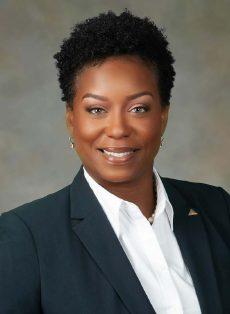
At Regions Bank, financial wellness is at the heart of our mission to make life better for the people and places we serve.
We are committed to helping consumers and businesses protect and grow their finances while navigating the unexpected. We’re here for the “IF” in “Life.”
And our commitment extends beyond services for customers; it reaches people nationwide, regardless of whether they bank with Regions. Through Regions Next Step, free financial education is made available to anyone at www.regions.com/nextstep. These free insights, tools, budget calculators, and more are designed to reach people at practically all stages of life – from children learning the basics of managing money, to professionals seeking guidance on building savings, paying down debt, and building long-term plans.
Beyond what we make available online, Regions’ branch-banking teams are available for in-person advice and guidance at locations across Atlanta, North Georgia, and beyond. Our teams are here to listen to your unique financial needs and goals – and help you develop a plan to get you where you want to go.
We are proud to work with The Atlanta Voice to share more on Regions’ long-term commitment to creating greater financial wellness.
And we’re ready to work with you, too.
Come see us at www.regions.com or at your nearest Atlanta-area Regions branch.
Mia Hubbard Senior Vice President and Consumer Banking Executive Regions Bank


BY CHARLENE CROWELL
In recent weeks, key Capitol Hill committees held hearings with CEOs of some of the nation’s largest commercial banks. At issue for both California Congresswoman Maxine Waters, Chair of the House Financial Services Committee, and Ohio’s Senator Sherrod Brown, Chair of Senate Banking, are disturbing industry trends like growing mergers, closing bank branches, and a push towards online services that together create ‘banking deserts’ in already underserved communities.
Although bank mergers create institutions with larger assets, for consumers and small businesses alike, these industry moves change where and how communities can access full-service banking.
In opening remarks at a September 16 House Financial Services Committee hearing, Chairwoman Maxine Waters made clear what she hoped the bank CEOs would address.
“Over the past several years, we’ve seen the system of banking in this country take a dramatic shift,” stated Waters. “Our nation’s biggest banks have gotten even bigger during the pandemic, in part, through mergers. Regulators have rubber stamped these merger applications for far too long, and it’s past time we get to the bottom of who these mergers are actually benefiting.”
“I remain concerned,” continued Waters, “that branch closures across the country, which are often a consequence of mergers, are expanding banking deserts and harming communities that rely on branches for basic banking services.”
In response to Chairwoman Waters, Andy Cecere, Chairman, President and Chief Executive Officer of U.S. Bancorp, offered a different perspective on industry trends, one that embraces innovation as time-saving, competitive, and convenient tools.
“By using our branch network in combination with digital tools, we enable our customers to be more connected to their financial future,” testified Cecere. “Last quarter, 82 percent of our consumer transactions were enabled by our digital capabilities, with 64 percent of loan sales executed digitally. Digital advancements that differentiate us from the market add to the customer experience.”
Jane Fraser, Chief Executive Officer, Citi shared testimony that seemed to confirm many of the issues raised by Chairwoman Waters.
“Our retail bank serves roughly 70 million customers in the U.S., where we operate 651 retail branches concentrated in the six metropolitan areas of New York, Washington, D.C., Miami, Chicago, San Francisco and Los Angeles,” noted Fraser. “We have fewer than the approximately 1,000 branches we had 10
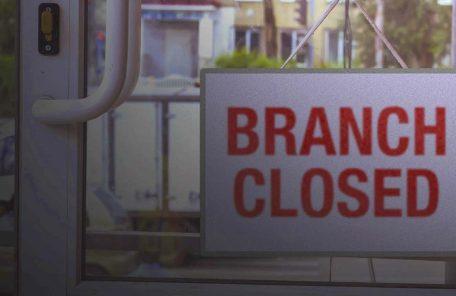

years ago, but more than the 450 branches we operated at the turn of the millennium. Roughly 29 percent of our branches are in low- and moderate-income census tracts.”
Days later on September 22, the Senate Banking Committee held its own hearing with bank CEOs. And like Waters, Brown’s opening remarks echoed many of the same concerns.
“Together, you have over $13 trillion in assets – that’s half the nation’s GDP,” said Brown. “You have hundreds of millions of customers. You also have the benefit of a federal backstop – a safety net – something that your customers don’t have.”
“And you profit from all those transactions –to the tune of hundreds of billions of dollars. With those profits – and with the taxpayer support you get – come a responsibility to actually serve your customers and the larger economy,” Brown added.
William H. Rogers, Jr., CEO of a recent bank merger that created Truist, was one of the Senate hearing’s witnesses.
“Over the past ten years, Truist closed an average of 193 branches annually,” said Rogers. “Many of these closures occurred following the merger of BB&T and SunTrust, because the two heritage banks, in many instances, maintained separate branches in the same neighborhoods and even on the same street corners. These closure plans were reviewed as part of the merger approval process and had virtually no long-term impact on branch availability or convenience for clients.”
Research by the National Community Reinvestment Coalition (NCRC) documents how still shrinking numbers of bank branches in Black and other communities of color diminish the economic futures of communities already reeling from a lack of sustained investment and redevelopment in its report-
ed titled, The Great Consolidation of Banks and Acceleration of Bank Closures Across America.
From 1984 to 2021, the nation’s number of banks shrank from nearly 18,000 to fewer than 5,000, according to NCRC. More than 4,000 of these closures occurred since March 2020, coinciding with the onset of the pandemic. Further, one-third of bank branch closures occurred in majority-minority neighborhoods and/or low-to-moderate income areas, where convenient bank access is often viewed as central to ending inequities in financial services.
“The presence of local branch offices provides an opportunity for face-to-face interactions that build both trust and financial literacy for individual borrowers and small businesses…Today’s larger, less-local banks are still charged with serving the credit needs of the entire community they serve,” the report continues. “Changes in how the public interacts with their bank do not create an exemption to the law.”
Summarizing his committee’s concerns, Chairman Brown underscored to the CEOs what might have been overlooked.
“It’s past time for the financial industry to be as good to the American people as the country has been to you,” concluded Brown. “We will continue to hold you to the highest standards, so that Americans can keep more of their hard-earned money.”

DEWAYNE KING Head of Retail, Fifth Third Bank Georgia
With inflation running at a 40year high and the Federal Reserve likely to continue hiking shortterm interest rates until price increases are slowed, consumers have less purchasing power than they had before. Rising prices for necessities such as rent, food, and gasoline have already put a dent in many personal budgets.
In addition, higher interest rates mean you will probably pay more to borrow money. As such, you can expect to see interest costs rise on your credit cards, car loans, adjustable-rate mortgages, and home equity lines of credit.
Finding ways to stretch your income is critical during periods of high inflation to avoid getting into debt or having to dip into savings to make ends meet. Here are a few money management tips to help you keep track of your spending so that inflation doesn’t upend your financial goals.
Decide Where You Can Cut Back
The first step to control your spending is to create a budget to accurately track where your money is going each month. A spending calculator can show you how much
of your income goes to essential expenses, such as rent, childcare, and car payments, and how much you are spending on discretionary items, such as dining out, travel, and entertainment.
Although you may not be able to cut back on your fixed expenses in the short term, there are plenty of ways to adjust your discretionary spending. A good technique may be to determine cost-cutting steps such as postponing a new car purchase, eating out less, and buying fewer clothes.
Next, you need to decide where to reduce your expenses. Here are some budgeting tips that can help you to cut your spending:
• Cancel subscriptions to streaming services and cable TV channels that you don’t frequently watch.
• At the grocery store, skip higher priced brands in favor of private-label brands, which are often produced by the same manufacturer. Plan your meals for the week ahead and bring a list—one trip to the store saves on gas and avoids overspending on costlier convenience foods. Use an app such as Ibotta to earn cash back at grocery stores and other retailers. If you use
a credit card each month for shopping, be sure to utilize a card with a rewards program where possible.
•Use a programmable thermostat to target the right amount of air conditioning and heat when you are at home and save energy when you are away. Unplug appliances when not in use to save electricity costs.
•Curb impulse buying by setting a waiting period, say 24 hours or more, between the time you decide to buy something and when you actually pay for it. Often the perspective of a little time can keep you from buying things you really don’t need.
•Talk to your insurance agent about lowering your car insurance premiums by raising your deductibles or taking advantage of discounts for low mileage, safe driving, and good credit scores. You may even consider switching to an auto insurance company that offers a less expensive policy.
Another way to stretch your money during a period of high inflation is to reduce the interest payments you’re paying on debt.
Consider consolidating your credit card debt onto a bal-
ance-transfer credit card, which could give you a year or more at an introductory 0% annual percentage rate (APR) on the amount of debt you transfer after paying a nominal transfer fee. This will give you time to pay off debt without the interest charges—which potentially will continue to rise—and improve your credit score in the process.
If you have a good credit record, you may be eligible to consolidate your credit card debt with a personal loan. A debt consolidation loan has a fixed interest rate, which will be much lower than a credit card annual percentage rate, as well as a monthly payment schedule until you pay off your debt.
The current level of inflation may be temporary, but it is inevitable that there will be a decline in the purchasing power of today’s dollars. Saving for the future with a diversified portfolio of stocks and bonds, such as in a 401(k) or IRA, has the potential to deliver returns that will outpace inflation. Two investments that specifically combat high inflation are Treasury Inflation-Protected Securities (TIPS) and I-Bonds, which pay interest
that adjusts for inflation rates. Have Cash at the Ready Aim to build an emergency fund that is able to meet at least three months of your living expenses. Make saving easy by using a mobile app that automatically transfers money from your checking account to your savings. One silver lining to the rising interest rates during this period of high inflation is that you may potentially earn higher yields from your savings account.
Having sufficient savings is a critical strategy to deal with today’s higher prices. Should you need a new computer, refrigerator, or car, you don’t want to sacrifice quality or go into debt to make an essential big-ticket purchase.
Try Fifth Third Momentum® Banking: Banking Made Simple Fifth Third works to help those wanting to strengthen money habits now to reach long-term financial wellness through Fifth Third’s Momentum® Banking. Benefits include no monthly service fee, no minimum balance requirements, no fees at over 50,00 partner ATMs nationwide, extra time to help avoid overdraft fees and access to money when you need it.

At SouthState, we believe your mortgage is just as important as your new home. We’ll take the time to understand your unique situation and help you through each step of the mortgage process.
Use this checklist to help the application process be quick and easy.
For questions about the mortgage process, please give us a call.
866.229.5628
Mortgage@SouthStateBank.com
SouthStateBank.com/Mortgage
T he Sales Contract
The completed and signed sales contract for the property you are purchasing with all addenda.
Prior Residence History
The home address for every residence you have lived in during the past two years. If you are currently renting, bring the landlord’s name, address and phone number.
O ther Real Estate Information
Address, market value, loan information and copies of any rental agreements for other real estate you own.
Em ployment History
Name, address and phone number for every employer you have worked for during the past two years.
I ncome Information
Your most recent pay stubs, plus W2s and signed income tax returns for the past two years. You will also need to bring proof of other sources of income you wish to use to qualify for your loan.
Checking, Savings, Retirement & Equities Accounts
Name and address of financial institution holding the account, account number, account balance and complete statements for the past two months.
Many people believe they’re not prepared to manage their money, credit, and assets. Most of us didn’t have a course in high school or discussions around money at dinner to help. Instead, we’ve used generational habits, myths, and social media to gain basic financial knowledge—and most of it’s incorrect, especially when it comes to purchasing a home.
Financial literacy will help you use your money well and prepare you for major milestones like purchasing a home. A simple way to understand (and begin to tackle) financial literacy is to break it down into six components:
Earn—It’s wise to understand your salary, benefits, deductions, and withholdings. Review your paystubs and take advantage of all the credits and deductions available to you. If you have variable income or you’re self-employed, make sure that you have a 2-year history that can be documented.
Spend—Having a budget puts you in the driver's seat of your finances. It’s not just a plan for how you want to spend your money, but also the most useful tool for achieving your financial goals. Start at ucbi. com/calculators or use budgeting tools within online banking. A budget is critical to help you save for your down payment and closing costs and to have funds to fix up or move into your new home.
Save—Having long-term financial goals helps you budget beyond your day-to-day needs. Those goals should include an emergency fund, planning for retirement (take advantage of employee plans such as 401k), saving for big purchases, and paying off personal debts.
Invest—Once you’ve started to budget, you may be able to allocate some of your income toward investments. If so, an important step to investing responsibly is research. You can do research online or sit down with a financial advisor to get guidance on where your money will be best utilized. They can develop a plan based on your risk tolerance, age, and income goals for retirement.
Borrow—Using credit wisely can increase your credit score and assist with major purchases. Shop around for the loan option with the best Annual Percentage Rate (APR) and be sure to pay all bills on time to ensure you stay in charge of your credit history (and not vice versa). Many people assume they need a lot of credit, but in reality, having four trade lines is sufficient. The key is the age of your accounts (15% of your credit score), paying on time (35%), and keeping your utilization between 10-30% (30%).

Protect—When it comes to your money, you can never be too careful. Saving for an emergency, purchasing insurance, monitoring your credit, being vigilant about identity theft, and managing your financial records should become routine habits.
Ask yourself:
Do you know how to create a budget?
Do you have an emergency fund that covers at least three months of basic expenses?
Do you have a plan for retirement?
If you have debt, do you have a plan to pay it off?
Do you know your credit score and how to improve it?
If you answered no to one (or more), don’t worry. We’re here to help. Being empowered to make good financial decisions is something everyone needs. Contact a local United banker today to set yourself up for financial well-being.
Then, when you’re ready to take a step towards homeownership (or your next home), we’re here to help make it possible. We offer low to no down payment programs, closing cost assistance, and down payment assistance. Contact me at jennine_hunter@ucbi. com or 317-529-5393, and I’ll work with you to find the best mortgage loan for your financial goals.

JENNINE HUNTER, NMLS# 1780411 ucbi.com/team/jennine-hunter AVP, Mortgage Loan Originator © 2022 United Community Bank | NMLS #421841 | United Community Bank Mortgage Services is the mortgage lending division of United Community Bank. We are an approved seller/servicer for the Federal National Mortgage Association (Fannie Mae) and the Federal Home Mortgage Corporation (Freddie Mac). Normal credit criteria apply. Not all borrowers will qualify. This is not a commitment to lend. Subject to normal credit underwriting criteria. Offer subject to change without notice. Make the move into your dream home. United mortgage experts are here to help you take the first step. Learn more about our down payment and closing cost assistance options at ucbi.com/PATH.
Equal Housing Lender. | © 2022. United Community Bank | NMLS# 421841 | ucbi.com/mortgage | United Community Mortgage Services is the mortgage lending division of United Community Bank. We are an approved seller/servicer for the Federal National Mortgage Association (Fannie Mae) and the Federal Home Mortgage Corporation (Freddie Mac). Normal credit criteria apply. This is not a commitment to lend. This is an advertisement. ¹Informational only; consult insurance, tax, legal, real estate, and/ or accounting advisors before engaging in any transaction.

Financial independence means different things to different people. For some, it means having a savings account that’s flush with cash, or building generational wealth that will change their family’s future. For others, it’s a life free of credit card debt and mortgage payments, or a life full of travel. The definition is uniquely yours – depending on your long-term financial vision.
Achieving financial independence is attainable with clear steps and a strong focus. It starts with setting goals; creating and managing your budget; paying down debt and saving; and evaluating your progress regularly.
Whatever financial independence means to you, today is a good day to start developing habits that will help set you up for a solid financial future. To help you start, here are four simple steps that you can take today to better manage your money and give you better peace of mind.
Step 1: Set achievable goals. The first step to achieving financial independence is to define what that means to you. What does your ideal lifestyle look like? Does a specific idea or goal come to mind? If so, think about it as something you can work toward. Perhaps it’s early retirement or eventually downsizing to a less expensive living situation, which leaves more flexibility in the near-term.
Having a better sense of your future desires will help you set more achievable goals – short-term, midterm and long-term – a crucial first step to achieving financial independence. Know what you’re working toward and then you can plan around that – your budget, debt management and investments.
Step 2: Create and manage your budget. Once you’ve set goals, create a budget. Your desired lifestyle will help you decide how much money you need to allocate to assets like savings, retirement and investments to reach your goals on time. View budgets as a living document that fluctuates over time as spending evolves from month-to-month.
This could be a good time to work with a financial advisor for a more holistic approach to your finances. Your strategy is unique to you, so your advisor should evaluate your full financial picture and offer research-based recommendations on investing, banking and lending needs. Your advisor will also explain how certain life events and market cycles might affect your path forward, and help you adjust your strategy to stay on track.
SPONSORED CONTENT

A Chase Community Manager can help you get on the road to financial wellness and independence. Stop by one of these Atlanta area branches to connect and learn more.
Step 3: Pay down debt and start saving. It’s difficult to be free of financial hardship when you’re burdened by debt, and rising inflation and interest rates have fueled a 13% cumulative year-overyear increase in credit card balances. Paying down debt is an essential component of your financial independence, and more than eight in 10 (83%) Americans prioritize paying down debt rather than saving for the future.
While paying off debt is important, establishing savings is also a critical component of financial freedom. It can be the cushion you need for unexpected expenses or emergencies that arise. Building savings doesn’t just happen though, you have to be intentional about putting money aside. Big goals start with small progress: If saving seems overwhelming, start small by committing to putting aside one dollar every day. At the end of the month, deposit that $30 into your savings account and start the next month with the same strategy – you’ll be shocked at how much you’re able to save over time if you stick with it. And with automatic tools like Chase’s Autosave feature, you
can schedule transfers from your checking account to your savings account, at an amount and frequency that’s most comfortable for you.
Step 4: Evaluate your progress. Assessing your spending with what you planned to spend on a regular basis will help you better manage your spending habits, adjust your savings and monitor progress toward your long-term financial goals. It will also provide valuable insights into the areas where you’re spending the most money and if there is opportunity to revise. Review your budget regularly and monitor and evaluate your spending habits at least once a month.
Remember, achieving financial independence takes time and it’s important to regularly look for areas of improvement and determine what’s working and what’s not. Over time, you’ll find that managing your finances will become easier and more effective, creating a better financial future.
Sponsored content from JPMorgan Chase & Co.





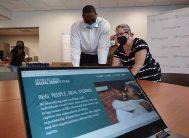
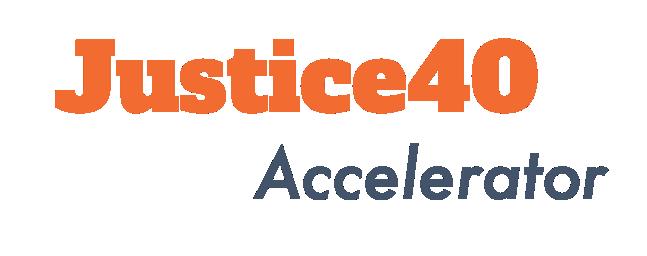
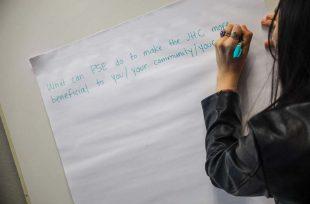


The future of our communities depends upon our ability to provide equitable growth for all.
From energy equity to youth entrepreneurship, the Partnership for Southern Equity advances policies and institutional actions that promote racial equity and shared prosperity for all in the growth of metropolitan Atlanta and the American South.
psequity.org




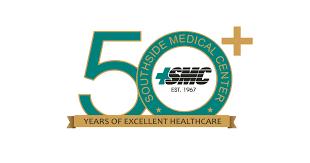
Your credit is crucial to your overall financial picture. Because your credit score can help lenders and creditors learn how well you handle financial responsibilities, having a good score can make a difference when you're trying to purchase a car, rent an apartment, buy a home, or reach other goals.
The factors that influence your credit score may vary between each of the three major credit bureaus – Equifax, Experian or TransUnion. However, there are ways to positively influence your score and it starts by understanding the factors that contribute to it. Here are five key factors affecting how credit scores are calculated:
1. Payment History
Your payment history accounts for about 35 percent of your credit score. Payment history includes your account payment information, such as
the number of accounts you’ve paid on time and any delinquencies. It also includes bankruptcies or judgments.
So, how can it be improved? If you’re not already doing so, make sure to consistently make on-time payments for both revolving loans, like credit cards, and installment loans, like student loans. Creating and implementing a debt payoff goal is also helpful.
2. Credit History
Your credit history accounts for about 15 percent of your credit score. This includes how long your accounts have been open and the time since your last account activity. The longer your credit history, the better idea a lender has of your financial behavior.
3. Amounts Owed
How much money you owe accounts for about 30 percent of your credit score. This includes the amount you
owe on credit accounts and the ratio of debt to your total credit limit.
One great tactic to help increase your score is maintaining credit card balances that are low in relationship to available credit. And be sure to pay bills on time!
4. Credit Mix
The types of credit you use accounts for about 10 percent of your credit score. Utilizing a variety of accounts, such as credit cards, auto loans, home loans and personal loans, helps signal to lenders that you’re less of a credit risk.
You may be able to improve your score by opening new types of accounts. However, keep in mind that you should only apply for credit when you need it.
5. New Credit
New credit accounts for about 10 percent of your credit score. New cred-
it is how often you apply for, the number of inquiries (when a lender reviews your credit) and the number of new accounts you’ve opened in the last 6090 days.
It’s important to know that applying for multiple new credit accounts over a short period of time can negatively impact your score. You should only apply for new credit when it makes financial sense for your situation.
Understanding what impacts your credit can help you make smart decisions as you work toward your financial goals. To learn more about your credit score and credit report, join a Next Step Webinar, Your Credit Report, by registering at regions.com/ nextstepwebinars.

To determine whether a home equity loan is right for you, it’s helpful to first understand what it is. Home equity is the difference between the home’s market value and the amount you owe, and a home equity loan allows homeowners to borrow against the equity in their homes. Home equity loans typically have a fixed rate, set repayment terms and you receive the money as a lump sum. In comparison, a home equity line of credit (HELOC) generally has a variable rate and you only have to repay what you actually take out, plus any interest or fees.
Before making any financial decision - home equity loan or otherwise - it’s crucial to make sure it aligns with your financial situation and goals. Here are a couple common uses of a home equity loan and a few considerations.
According to a recent Next Step Survey, almost half (48%) of US homeowners say they’re likely to update their current homes in an effort to increase its value in the next year. It’s generally good practice to put the funds from your home equity loan towards an asset that will appreciate in value over time. For example, many people use a home equity loan to finance a home addition or renovation. If upgrades like a bathroom or kitchen remodel will help increase the value of your home, then using some of your home’s equity might be something to consider. Ask yourself: will the equity created meet or exceed the total cost of borrowing the funds (including interest and fees)? If the answer is yes, then using a home equity loan for a renovation might be the right financial decision for you.

Home equity loans can also be used to decrease or consolidate debt. For example, some people use home equity loans to consolidate debt from higher interest rate credit cards or installment loans into a single loan. This may be a beneficial strategy as it can consolidate multiple payments into one. You may want to consider this if the repayment period for the home equity loan is shorter than it would be for your existing debts, or if the interest paid over the repayment period is less than what you would pay without consolidating your debts.
Funding Higher Education
Another use of a home equity loan is to pay
for college for yourself or a family member. Doing this can give you a lower interest rate than other types of loans, especially for those with excellent credit! You as the borrower could also have a fixed interest rate and lenders usually offer different term length options. Note that longer term lengths will lower the monthly payment amount while increasing lifetime interest; shorter term lengths increase monthly payment amounts but reduce lifetime interest. It’s important to evaluate your unique financial situation before determining if a home equity loan is the best option to pay for higher education. Keep in mind that for federal student loan debt, you would give up repayment options and
forgiveness benefits.
If you use your home equity loan funds for a substantial home improvement project, the interest paid may be tax deductible. For anything tax-related, you should always consult a tax advisor or irs.gov for more information regarding the deductibility of interest and charges. Know that if you take out a small loan, the fees might outweigh any potential tax advantages.
Generally, you can borrow up to a maximum of about 85% of your home’s equity, but it’s important to note the approved amount will vary based on a variety of factors, including your unique financial situation, your credit history, and the lender’s underwriting requirements.
As with any type of loan, there are risks to be weighed. For a home equity loan, your house will serve as collateral for the lender. This means that falling behind on payments could lead to foreclosure on your home if you can’t make payments.
Remember, when it comes to loans, there’s not a one-size-fits-all approach. Be sure to give the loan terms and your financial situation careful consideration. If used in a smart and strategic way, a home equity loan just might be able to help you meet your financial goals.
For more home equity borrowing tips and resources, check out Next Step’s Homeownership Resource Center at regions.com/NextStepHomeownership.




Topic: Your Road to Homeownership
October 20 at 9:00 am CST
Topic: Your Credit Report
BY ANGELA SWINSON LEE
Whether you’re eyeing the latest model car or an outfit that is beyond your budget, experts say it’s important to think about how decisions will impact the next generation.
Cecil Burrowes, Senior Vice President of Diverse Customer Segment Mass Market Strategy with Wells Fargo, spoke with the Washington Informer about building generational wealth and how financial decisions made today can have an impact on generations to come. He added that protecting assets can contribute to reducing the racial wealth gap.
“Understanding that when we talk about generational wealth, wealth meets a myriad of qualifications. When we mention wealth, people disqualify themselves. Wealth can be your check-to-check living. Wealth can be the savings you have in your piggy bank,” Burrowes said, adding that people need to eliminate fear when having conversations about wealth. “We think it’s something that doesn’t necessarily speak to us.”
Burrowes said he wants people to realize that a portion of their income
and assets can take care of daily expenses, but they can also make their disposable income work for them.
“Individuals making ends meet still have disposable income and have to figure out how it moves to the next level,” he said. “What is the thing that you can get to work for you and your legacy?”
“The challenge is that when we lose a generation, each new generation starts at zero,” he said. “Without the proper education and the awareness of tools that are available to individuals to overcome that, we keep falling in that consistent trap over and over again.”
Burrowes said Wells Fargo is focused on ensuring everyone has access to all of the available resources.
“I think we have to be intentional. With intentional focus, we can ultimately help more customers from a wealth transfer perspective,” he said.
In addition to educating families on transferring wealth, earlier this year, Wells Fargo committed $210 million to advancing racial equity in homeownership. The initiative includes the creation of a Special Purpose Credit

Senior Vice President of Diverse Customer Segment Mass Market Strategy
Program to help refinance the mortgages of minority homeowners with a Wells Fargo Mortgage. The purpose is to lower mortgage rates and reduce costs of refinancing, according to a press release from the bank.
In an effort to broaden community outreach, Wells Fargo will also expand its partnerships with the National Urban League and Unidos US.
The company will provide homebuying readiness and counseling, and work to eliminate systemic obstacles that prevent many Black and Hispanic customers from becoming homeowners.
The company will also use $60 million to fund partnerships to implement plans to address the root causes of homeownership gaps through the “Wealth Opportunities Restored through Homeownership” (WORTH) grants. The program is expected to support 40,000 homeowners of color in eight markets through 2025.
“Homeownership is a key pillar of the American dream. It represents a means of intergenerational wealth,” Burrowes said.
Wells Fargo has long been a leader in the housing finance industry.
Between 2017 and 2021, Wells Fargo has helped more than 425,000 Black and Hispanic families achieve their homeownership goals with $110 billion in financing, according to the press release.
But with that, Burrowes said, the company wants to ensure homeownership is sustainable, and that cus-
tomers have the tools and resources they need to transfer their wealth.
It’s important to have a plan in place so you can ensure what you’ve built during your lifetime can be passed to the next generation. Planning is a key to ensuring that you’re able to make a proper handoff when the time comes.
When making the plan, Burrowes said, the first step is having conversations with other family members. Those can be difficult conversations, but they are important in the planning process. Once those conversations have occurred, depending on your needs, you can use self-service tools, or contact an estate attorney to help define how to move forward.
Most importantly, consumers need to complete the process. Many people start the planning but fail to complete it for a number of reasons, Burrowes said, adding that some hesitate with the price of final planning.
“There is a cost associated with planning, but it far outweighs the probate costs,” he said.


Buying a home may be possible with a low down payment. It may be just what you need to get into your first or next home.
Giving you flexibility
Our Dream. Plan. Home.SM mortgage is a fixed-rate loan with a 3% down payment option.1 It provides flexibility if you have limited credit history or credit challenges, and is available for a variety of loan amounts, including in high-cost areas. I’ll help you understand your available options so you can choose what works for you. We’ll discuss the loan amount, type of loan, property type, income, and homebuyer education requirements for eligibility. We’ll also talk about mortgage insurance that’s required with a low down payment and how it will increase the cost of the loan and monthly payment.
To learn more, call 1-877-937-9357 or visit www.wellsfargo.com/mortgage. Helping you get home
A roof over your head and gas in your tank cost more than ever. But prices for these essentials color your view of investing.
What do your nest egg, retirement planning and personal finances share with the overall American economy? Plenty, especially when it comes to the bite from energy and home prices.
Gasoline and Fuel Costs are Skyrocketing
In the past couple of years and especially in 2022, rising gasoline and heating and cooling costs gobbled up family income, although a red-hot housing market helped ease the impact to personal wealth (at least on paper). Nonetheless, Americans are feeling uncertain about their economic prospects.
Gas and fuel oil costs seriously affect our economic well-being, accounting for nearly 10% of the U.S. Consumer Price Index. And according to the latest consumer price index figures from the U.S. Bureau of Labor Statistics, energy and home costs continue to spearhead jumps in overall prices in 2022.
• Energy is up over 30% in the past 12 months
• Gasoline is up over 40% in the last 12 months
• Fuel oil up a staggering 80%
And anyone who fills up their car knows that the national average for a gallon of gas keeps hitting all-time highs, (currently less than a nickel under $5/gallon) with many predicting more in-

creases later this summer and into the fall.
Housing is Bubble-like
Meanwhile, the housing market is red-hot –almost bubble-like. This is good news for current home owners – although not so good news for prospective homeowners or renters.
Consider this: the S&P CoreLogic Case-Shiller U.S. National Home Price NSA Index, covering all nine U.S. census divisions, reported a 20.6% annual gain in March, up from 20.0% in the previous month.
Further:
•The 10-City Composite annual increase came in at 19.5%
• The 20-City Composite posted a 21.2% yearover-year gain
Tampa, Phoenix, and Miami reported the highest year-over-year gains among the 20 cities in March. Tampa led the way with a 34.8% year-over-year price increase, followed by Phoenix with a 32.4% increase, and Miami with a 32.0% increase.
Seventeen of the 20 cities reported higher price increases in the year ending March 2022
versus the year ending February 2022.
Maybe rising mortgage rates will cool housing. Maybe not. A year ago, the benchmark 30-year fixed-rate mortgage was at 3.19%. Four weeks ago, the rate was 5.38%. For now, home purchases and prices remain strong.
The economy is hardly on fire, and skyrocketing energy and housing prices are two good reasons to question whether we are headed towards a recovery and better times or a recession and worse times.
Your optimism fuels your desire to invest and commit to investments – especially in our recent rollercoaster market.
•How do you feel about the economy and your own financial prospects?
• More confident than a year or two ago?
• How’s your mindset affecting your spending and investing?
Before you send money toward Wall Street, ask yourself these key questions.
Presented by Synovus.

SUBMITTED BY HOMEFREE-USA
According to Freddie Mac, 3.4 million African American renters are in a position to buy a home. So, why aren’t we, in larger numbers, with homeownership as one of the foundational steps to building wealth?
Because African Americans still face major obstacles. According to the Consumer Financial Protection Bureau, we are consistently denied conventional home and refinance loans at higher rates than our white counterparts.
For example, out of 108 mortgage applications filed by African Americans last year, one of Maryland’s largest banks approved only 20 (19%) and denied 69 (64%). Another 19 (18%) “fell out” of the process; although clients ultimately got approved, they walked away from the loan, frustrated by the long, arduous process.
The numbers show the deck is stacked against Blacks even more than others. The good news? There is a way to beat these odds, with the right partner by your side in the process.
Work with a partner such as HomeFree-USA to get approved, fast.
Over 25+ years in the housing industry, helping people of color get the financing they deserve, this is what we’ve observed: All too often, applicants are just a few simple changes away from being credit-ready for the mortgage process.
With the right guidance, you can prepare for success and get the information you need to navigate the mortgage or refinance process quickly and easily.
By way of example, 96% of homebuyers who go through HomeFree-USA’s programs get approved on their FIRST application.
You want to choose a part-

Marcia Griffin CEO and Founder of HomeFree-USA

process and approval rates.
•DON’T expect a “quick fix,” or confuse credit repair with credit counseling. Avoid companies that charge you high fees to “fix” your credit. (Most of these firms leave you no better prepared for the home buying process.)
ner who can help you build a meaningful relationship with your lender and make the process—and your life!—easier.
Here’s how to choose the right partner:
•DO seek an experienced credit counseling agency that can connect you with down payment assistance and credit preparation programs, with a proven track record of success. Ask about their
• DO look for advisors willing to speak candidly with you, ask questions and give impartial advice you can’t get from a lender. The best advisors will explore issues affecting your readiness, analyze your situation, and provide solutions to improve your standing, which will require simple actions on your part.
•DO seek a counseling agency first, before talking to a lender. They can help identify issues that may cause your application to be denied before it happens—without impacting your credit score.
•DON’T go to a lender, loan officer, or broker before consulting with a counseling partner. Financial institutions are obligated to run a loan application if you ask for one, which can impact your credit.
•DO find nonprofit partners who have trusted relationships with multiple lenders and will work directly with the lender on your behalf. You want to create a better future. You’re eager to put in the work. You just need the right partner to cut through a process that’s stacked against you. Where to find the best credit counseling partners
Bridging the gap between financial strength and home-
ownership for people of color across America, HomeFree-USA is just one of many organizations that help aspiring homeowners prepare for a mortgage application, get approved, and get access to resources they might not otherwise know about.
We have a nationwide network of trusted agencies dedicated to closing the homeownership gap for people of color and other marginalized communities. You can also check out the U.S. Department of Housing and Urban Development for a comprehensive list of local, recommended intermediaries ready to help.
We are ready to support you to get approved for your mortgage or refinance. To begin a conversation with HomeFree-USA, contact us at info@homefreeusa.org, call 855-493-4002, or visit our website at homefreeusa.org.
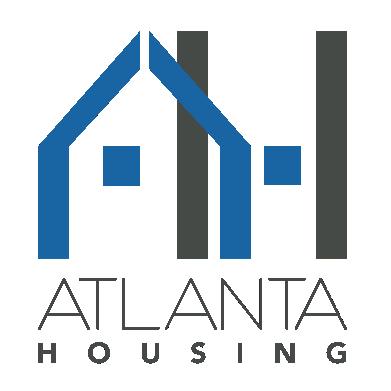
Provides eligible homebuyers with down payment assistance to purchase homes in the city of Atlanta

1600+ $25K*
261 DPA loan families served
Since the program’s inception, AH has assisted 1600+ firsttime workforce home buyers and has provided over $30 million in DPA funding.
Up to $20,000 for eligible homebuyers and up to $25,000 for eligible voucher participants, veterans, and education, healthcare, and public safety professionals
201 DPA loan families served
$5.6M $4.3M OVER OVER FUNDED FUNDED
SCAN FOR PROGRAM INFORMATION AND ELIGIBILITY GUIDELINES
OR visit https://www.atlantahousing.org/housingprograms/down-payment-assistance/